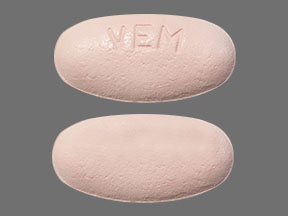Vemurafenib and Alcohol/Food Interactions
There is 1 alcohol/food/lifestyle interaction with vemurafenib.
Caffeine Vemurafenib
Moderate Drug Interaction
MONITOR: Coadministration with vemurafenib may increase the plasma concentrations of drugs that are substrates of the CYP450 1A2 and/or 2D6 isoenzymes. The mechanism is decreased clearance due to inhibition of CYP450 1A2 and 2D6 activity by vemurafenib. The interaction has been studied with caffeine and dextromethorphan, probe substrates for CYP450 1A2 and 2D6, respectively. In an in vivo phenotypic cocktail drug-drug interaction study in patients with cancer, caffeine systemic exposure (AUC) increased by 2.6-fold when a single dose of the CYP450 probe substrate cocktail was administered following treatment with vemurafenib 960 mg twice daily for 15 days, while dextromethorphan AUC increased by 47%.
MANAGEMENT: Caution is advised if vemurafenib must be used concurrently with drugs that undergo metabolism by CYP450 1A2 and/or 2D6. Dosage adjustments as well as clinical and laboratory monitoring may be appropriate for some drugs whenever vemurafenib is added to or withdrawn from therapy. Concomitant use of vemurafenib and substrates of CYP450 1A2 and/or 2D6 with a narrow therapeutic index (e.g., antiarrhythmics; theophylline) should be avoided if possible.
References (1)
- (2011) "Product Information. Zelboraf (vemurafenib)." Genentech
Switch to consumer interaction data
Vemurafenib drug interactions
There are 628 drug interactions with vemurafenib.
Vemurafenib disease interactions
There are 7 disease interactions with vemurafenib which include:
- lung toxicity
- cutaneous malignancies
- dermatological reactions
- hepatic impairment
- QT prolongation
- renal impairment
- visual complications
More about vemurafenib
- vemurafenib consumer information
- Check interactions
- Compare alternatives
- Reviews (4)
- Side effects
- Dosage information
- During pregnancy
- Drug class: multikinase inhibitors
- Breastfeeding
- En español
Related treatment guides
Drug Interaction Classification
| Highly clinically significant. Avoid combinations; the risk of the interaction outweighs the benefit. | |
| Moderately clinically significant. Usually avoid combinations; use it only under special circumstances. | |
| Minimally clinically significant. Minimize risk; assess risk and consider an alternative drug, take steps to circumvent the interaction risk and/or institute a monitoring plan. | |
| No interaction information available. |
See also:
Further information
Always consult your healthcare provider to ensure the information displayed on this page applies to your personal circumstances.


